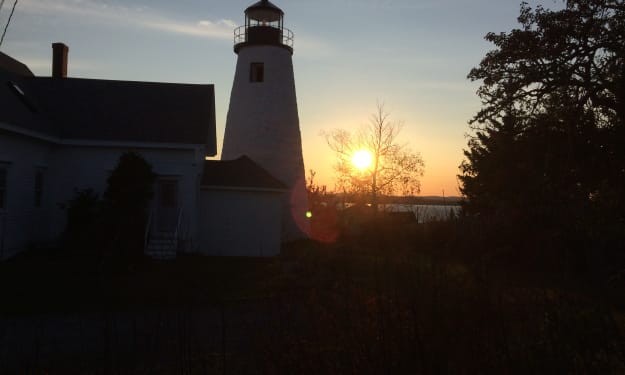
The Dark Days: A Mysterious Phenomenon
The dark days are a mysterious natural phenomenon that has occurred only a few times in human history. While some may write these off as eclipses or just some weather events, in reality, they are very creepy, and we have no idea why they happen. So, what are these dark days anyway, and what's so strange about them? Let's try to find out.
One of the most well-known cases of the dark days occurred in Yamal, Siberia, on September 18, 1938. The residents of Yamal were perplexed when they observed something inexplicable—an eclipse, which they later nicknamed the "black day." Meteorologists and astronomers were unable to explain what happened that day. Witnesses described the event as a sudden decrease in light and a change in the color of the clouds, which began to acquire a yellowish-brown, sometimes red-brown hue. By 9 a.m., the lighting had changed dramatically, and it was as if the world was viewed through a dark light filter. The brown tones of the clouds intensified, and by 10:30 a.m., the sky and earth didn't differ from each other in lighting and color. Everything seemed homogeneous and black, absolutely devoid of light. The city was also plunged into complete radio silence, and meteorologists couldn't even contact the authorities. Local residents were unable to set up any stations, and everyone was in the dark, both literally and figuratively.
Meteorologists decided to launch several flares to try and penetrate the heavy dark clouds hanging over the city. However, the flares disappeared into the dense clouds and were completely invisible. The weather was perfectly fine, and this black silence lasted for about an hour. After that, the black day ended as unexpectedly as it began. Even more baffling, the strange clouds left literally no trace, no rain, no dust, nothing. Researchers found out that the black day had spread for 125 to 155 miles around, and the dark band was moving from west to east. After passing through the southern part of the Yamal Peninsula, it headed on for a while and then disappeared completely.
Yamal isn't the only place where this phenomenon occurs. Similar eclipses have been happening in different parts of the Earth for many years. For example, in New England on May 19, 1780, people witnessed an event that was later called "New England's dark day." However, it lasted not one day, but several. A few days before this event, the sky turned yellow, and on May 19th, in broad daylight, it suddenly turned black. Witnesses described the night as uncommonly dark, and people had to light candles in their houses to carry on with their usual business. The smell of soot rained in the air, nearby rivers were covered with a thin layer of ash; and when the real night came, people noticed through the clouds that the moon had turned dark red. Only a couple of days later, people were finally able to see stars through the veil of clouds, and then everything suddenly returned to normal.
22 years later, on June 2nd, 1802, a schooner named El Dorado sailed across the Pacific Ocean when it was overtaken by complete darkness. There was no storm, and the ocean was completely calm, but the whole sky was covered with black clouds. These clouds dissipated after half an hour and left no trace. Again, 74 years later, one of the dark waves happened in Wisconsin on March 19, 1886. It was 3 p.m., and this time the wave was very short, lasting only five to ten minutes. A sudden night fell on the city, frightened horses were neighing, and terrified people were running around, trying to find a place to hide. When everything calmed down, local newspapers reported that the wave passed from west to east. There was no solar eclipse, no winds or hurricanes, nothing that could cause the darkness over the city.
On December 2nd, 1904, rumors claimed that the dark wave happened in Memphis. It was a clear and cold dawn over Bluff City, and people were doing their usual Friday morning chores. Suddenly, around nine in the morning, without any warning, the sun disappeared from the sky. It took only a minute for the bright, sunny day to turn into pitch darkness. People interrupted their work, and children in schools were completely terrified. Just like in previous cases, the weather was perfectly calm. It lasted for about half an hour and then suddenly ended. A little later, following a mysterious eclipse, a ferocious storm hit the city.
Scientists have tried to explain this phenomenon as a local decrease in the transparency of the atmosphere. Unlike solar eclipses, this darkness is denser, and it also covers only a small area. The transparency of the atmosphere comes from its ability to let through radiation and light. It's basically how well one can see distant objects. Everything can get dark and blurry because of the dust in the air, such as volcanic ash or smoke from forest fires. However, this doesn't explain why the darkness only lasts for a short time and why there are no traces of dust or ash after the event.
Another theory suggests that the dark days are caused by a high concentration of ozone in the atmosphere. Ozone absorbs a significant amount of sunlight and can cause a decrease in the amount of visible light reaching the Earth's surface. However, this theory also has its flaws, as there is no explanation for how such a high concentration of ozone could occur in a localized area.
Despite the various theories, the cause of the dark days phenomenon remains a mystery. While some may dismiss it as a natural occurrence, others believe it may be a sign of something much more ominous. Regardless of the cause, the dark days continue to fascinate and intrigue people to this day.
About the Creator
Eslam Abo
Hello !
Life is continuous and does not stop. There are events and stories that happened in the past and happened in the present as well as the future.
I find joy in discovering and reading and want to share it with you.






Comments
There are no comments for this story
Be the first to respond and start the conversation.